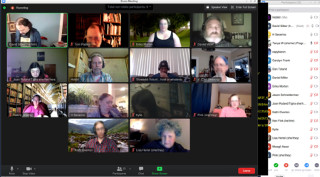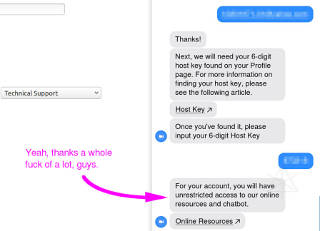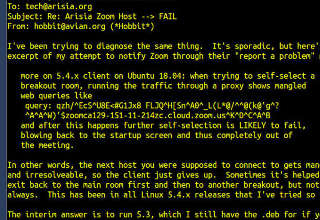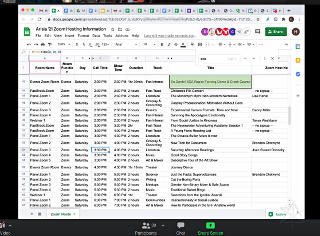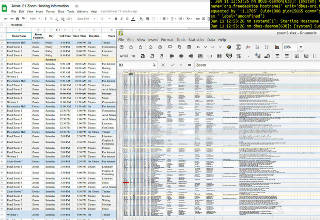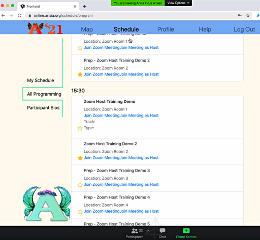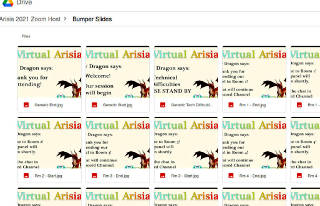| |
Silence of the hands
Frankly, the hands of the tech staff were tied in a few ways, not just in
Zoom testing.
Prior events usually made sure to have a couple of voice/video chat channels
in the associated Discord specifically for Tech use, but the IT team for
Arisia as a whole had put the kibosh on having *any* voice channels on the
Arisia server.
Why?
Because of mythology.
The fear was that voice channels would detract from "server bandwidth"
somehow, and gum up the works for the text participants.
This is essentially untrue -- voice connections, including one-to-one personal
voicechats, simply cause a user's *client* to go off to completely differrent
parts of the Discord infrastructure to set up those connections.
It has little or no impact on the traffic to and from the "guild" itself,
which is really just part of a long URL pointing into the vast cloud of
Discord endpoint links.
However, this groundless restriction could not be negotiated away, but having
kept my own connections to prior event servers that were still set up and
available, I simply pointed to a batch of them with instructions on how to
join and find their voice channels if anyone needed a quick conference with
more than two people.
The value of having that kind of communication at times cannot be overstated,
and having a quick convo right there on Discord can be far easier than the
overhead of trying to set up a one-off external Zoom meeting.
Where Zoom is still necessary for tech chat, in past events I've set up
recurring, "hostless" meetings with simple passcodes that anyone could
jump into any time as an alternative.
Other crews have used services like gather.town for tech backchannels.
The point is to have *something* available for voice-chat when needed.
Zooming between spaces? Not...
Techs and convention participants alike were repeatedly told to go fetch
the "latest version" of the Zoom client for their platforms.
However, this was not entirely applicable to the Linux variant, which
relatively few people run anyway but could hose them in various annoying
ways if they bought into that.
When Zoom moved to the 5.3.x level release, the Linux platform was now
able to self-select meeting breakout rooms and support that functionality
when hosting.
That was great, and allowed shenanigans like the kids playing "hide and seek"
through a batch of breakout rooms in virtual house-parties.
Then Zoom brought in the 5.4.x revision, which among other things enabled
the end-to-end session encryption option.
However, something in the Linux client broke in an odd way for
moving between breakout rooms, and it turned out later,
switching status from attendee to panelist in a webinar.
[They're quite similar, and evidently handled in a rather klunky way -- you
basically detach from one meeting space, and reattach to another one as
internally directed.]
The maddening thing was that the failure wasn't consistent, and doing such
moves would either succeed or kick the user completely out of the meeting
and back to the startup screen, completely at random.
So now the Linux users had a problem: for participating in a meeting with
breakouts, they'd want to back off to a 5.3 level client and happily
party-hop all night with it.
But if someone set up a meeting and enforced the E2E encryption, that 5.3
client wouldn't be able to join at all.
And *every* 5.4.x sub-release of Linux Zoom had the same problem, with no
apparent fix in the pipeline, whereas all the Mac and Windows clients were
all fine at the lateset revs.
This matched a consistent trend of Linux functionality lagging behind the
other platforms in the Zoom development/release cycle.
Fortunately, it didn't affect ability to *host* sessions, so I was fine
in that role regardless.
|
